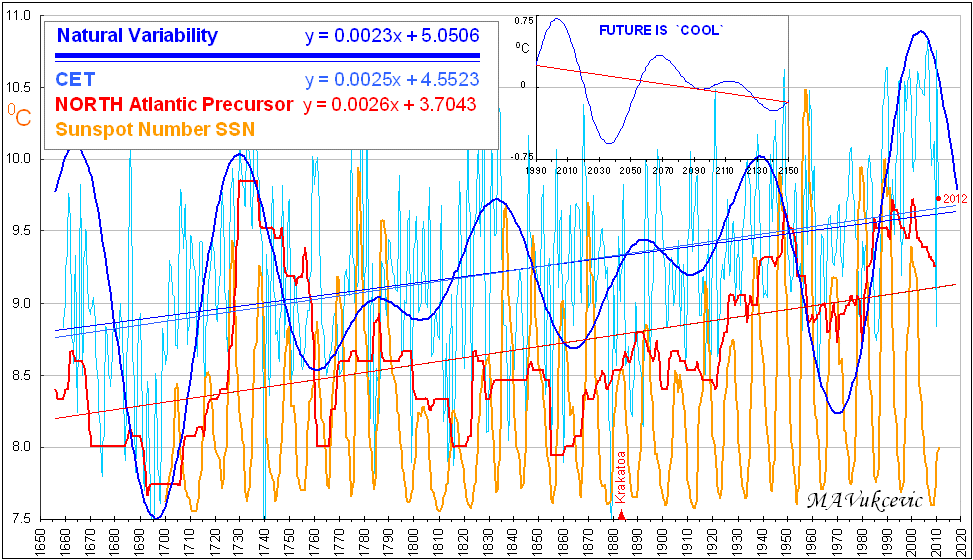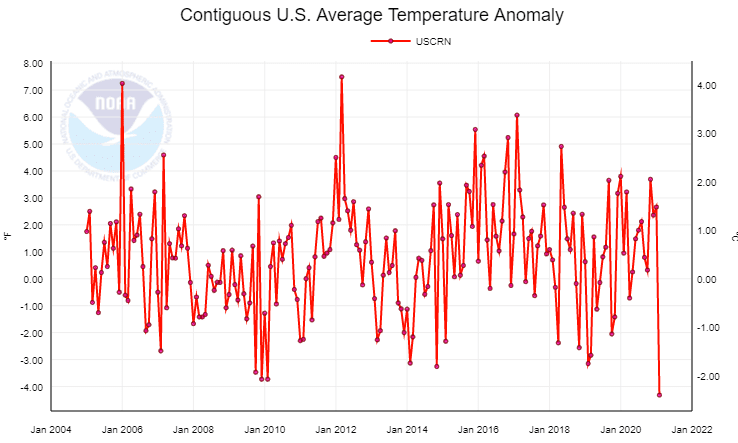ecstatichamster
Member
- Joined
- Nov 21, 2015
- Messages
- 10,504
http://www.hackettadvisors.com/reports/Hackett_Financial_Advisors_SampleReport.pdf
This is a very good piece from a man sells his information based upon accuracy to investors, rather than selling to government agencies giving grant money.
The sunspot trough of the 11-year solar cycle
2) The first sunspot trough in the 200-year Grande Solar Cycle Minimum
3) The Gleissberg Solar Amplitude Cycle
4) The transition year away from El Nino central tropical pacific sea surface temperature
anomalies towards La Nina central tropical pacific sea surface temperature anomalies (ENSO)
5) The Rotation of the Sun around the center of mass of the solar system known as the
barycenter
Right now, we are in what we call a weather volatility escalation cycle that is normal and occurs at two distinct times throughout history. When the sun is maximizing its solar irradiation (meaning maximum number of sunspot activity i.e. the 1930’s epicenter of weather volatility and when solar irradiation reaches its minimum (lack of sunspot activity) as we find ourselves today that was last seen in the late 1700’s and early 1800’s.
These periods of maximum and minimum solar irradiation cycles tend to last ~30 to 50 years before the sun normalizes back to the mean.
Right now, we are in a clear solar irradiation reduction cycle where sunspot activity is very low and expected to stay low for the better part of the next 30 years. That means the weather volatility expansion we have seen over the last several years is just the beginning and not the end and the weather is going to get much worse and much more disruptive to all life on the planet but especially the ability to grow food at quantities the world will need to survive.
Notice above that over the last 365 days the US alone has set ~17,000 all time new record highs and has also set ~17,000 all time record new lows. Now that’s is what I call weather volatility for you.
That suggests to us that the current Grande Solar Cycle Minimum we are entering will be more severe than the Dalton Minimum. And as described by the 1000-year Grande Solar Cycle where parabolic rises in temperature, which we have witnessed, lead to the greatest crashes in temperature on the onset of the next Grand Solar Cycle also supports this notion.
The prior Grande Solar Cycle Minimum before the Dalton was called the Maunder Minimum where sunspots were not seen for 20 years at all.
Based upon the studies that physicists have done on the current orientations of the 4 magnetic fields rotating around the sun, called the solar dynamo, we are expecting a long period of no sunspots, but it will not encompass this entire 30 year expected Grande Solar Cycle Minimum.
Based upon when these magnetic fields on the sun will be completely destructive and cancel each other out offering the weakest magnetic field strength possible where sunspots cannot occur will be the 10-year period from 2029 to 2039. So, this Grande Solar Cycle minimum will be a hybrid of Dalton and Maunder.
the Suns activity has gone dangerously quiet.
When the magnetic field strength of the sun weakens which is why sunspot activity declines it allows highly charged cosmic rays to hit the earth in greater quantities than normal. This increased bombardment of cosmic rays provides two major changes to earth’s climate.
One is that it increases nucleation and ionization in the atmosphere which is the basis for increasing cloud formation. The increase in cloud formation provides greater fuel for more severe storms, floods and extreme storm conditions like bomb cyclones. Increases in cloud formation also block the solar irradiation that is hitting the atmosphere from reaching the earth. This has the impact of cooling the oceans over time and causing a cold feedback loop.
What cosmic rays also do is penetrate the center of the earth mantel and disrupt tectonic activity that leads to increased large earthquake activity and increased higher order volcanic activity.
Large volcanic eruptions that reach a volcanic explosivity index of 6 or higher have large impacts to cooling the climate markedly and also increasing the severity of weather patterns. There have been 8 VEI-6 or higher volcanoes over the last 2000 years and 7 of them occurred during Grande Solar Cycle Minimums trough periods.
This is a very good piece from a man sells his information based upon accuracy to investors, rather than selling to government agencies giving grant money.
The sunspot trough of the 11-year solar cycle
2) The first sunspot trough in the 200-year Grande Solar Cycle Minimum
3) The Gleissberg Solar Amplitude Cycle
4) The transition year away from El Nino central tropical pacific sea surface temperature
anomalies towards La Nina central tropical pacific sea surface temperature anomalies (ENSO)
5) The Rotation of the Sun around the center of mass of the solar system known as the
barycenter
Right now, we are in what we call a weather volatility escalation cycle that is normal and occurs at two distinct times throughout history. When the sun is maximizing its solar irradiation (meaning maximum number of sunspot activity i.e. the 1930’s epicenter of weather volatility and when solar irradiation reaches its minimum (lack of sunspot activity) as we find ourselves today that was last seen in the late 1700’s and early 1800’s.
These periods of maximum and minimum solar irradiation cycles tend to last ~30 to 50 years before the sun normalizes back to the mean.
Right now, we are in a clear solar irradiation reduction cycle where sunspot activity is very low and expected to stay low for the better part of the next 30 years. That means the weather volatility expansion we have seen over the last several years is just the beginning and not the end and the weather is going to get much worse and much more disruptive to all life on the planet but especially the ability to grow food at quantities the world will need to survive.
Notice above that over the last 365 days the US alone has set ~17,000 all time new record highs and has also set ~17,000 all time record new lows. Now that’s is what I call weather volatility for you.
That suggests to us that the current Grande Solar Cycle Minimum we are entering will be more severe than the Dalton Minimum. And as described by the 1000-year Grande Solar Cycle where parabolic rises in temperature, which we have witnessed, lead to the greatest crashes in temperature on the onset of the next Grand Solar Cycle also supports this notion.
The prior Grande Solar Cycle Minimum before the Dalton was called the Maunder Minimum where sunspots were not seen for 20 years at all.
Based upon the studies that physicists have done on the current orientations of the 4 magnetic fields rotating around the sun, called the solar dynamo, we are expecting a long period of no sunspots, but it will not encompass this entire 30 year expected Grande Solar Cycle Minimum.
Based upon when these magnetic fields on the sun will be completely destructive and cancel each other out offering the weakest magnetic field strength possible where sunspots cannot occur will be the 10-year period from 2029 to 2039. So, this Grande Solar Cycle minimum will be a hybrid of Dalton and Maunder.
the Suns activity has gone dangerously quiet.
When the magnetic field strength of the sun weakens which is why sunspot activity declines it allows highly charged cosmic rays to hit the earth in greater quantities than normal. This increased bombardment of cosmic rays provides two major changes to earth’s climate.
One is that it increases nucleation and ionization in the atmosphere which is the basis for increasing cloud formation. The increase in cloud formation provides greater fuel for more severe storms, floods and extreme storm conditions like bomb cyclones. Increases in cloud formation also block the solar irradiation that is hitting the atmosphere from reaching the earth. This has the impact of cooling the oceans over time and causing a cold feedback loop.
What cosmic rays also do is penetrate the center of the earth mantel and disrupt tectonic activity that leads to increased large earthquake activity and increased higher order volcanic activity.
Large volcanic eruptions that reach a volcanic explosivity index of 6 or higher have large impacts to cooling the climate markedly and also increasing the severity of weather patterns. There have been 8 VEI-6 or higher volcanoes over the last 2000 years and 7 of them occurred during Grande Solar Cycle Minimums trough periods.



